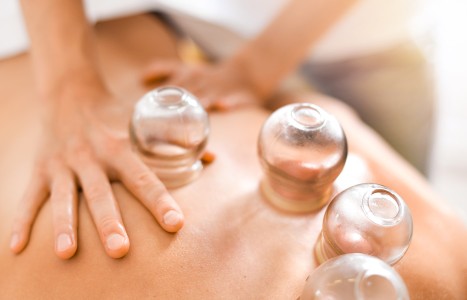Whether you accept it, avoid it or live somewhere in between, insurance coverage has become a defining issue for our profession. Patients increasingly expect to use their benefits, practitioners want to be compensated fairly for their time and expertise, and the system itself remains – at best – fragmented. The encouraging news is that coverage has expanded in meaningful ways. The challenging news is that reimbursement, across the board, remains inadequate.
The Hidden World Beneath Our Skin
- Fascia is a continuous structure, meaning that a restriction in one part of the body can pull on, tighten, or influence distant areas.
- By releasing the tension in the fascia, acupuncture helps restore the entire system, ensuring the body remains balanced and resilient.
- Acupuncture doesn’t just interact with nerves, muscles, or meridians in isolation; it impacts the fascia, the connective tissue matrix surrounding all these structures.
Fascia is a vital, yet often overlooked component of our anatomy, and many people are confused by it simply because they have never heard of it. So, what is fascia? It is an essential part of the human body that binds and connects everything. If you’ve ever peeled the skin off a piece of chicken, you might have noticed a thin, web-like material – this is fascia.
Imagine a spider web meticulously wrapping around every muscle, bone, organ, and nerve; this is what fascia does. It forms a network that connects, communicates, and supports every part of our body, and its role in enhancing acupuncture is profound.
The Connection Between Fascia and Acupuncture
Fascia is both an unsung hero in maintaining our health and, at times, an unnoticed culprit behind pain and mobility issues. Fascia is a continuous structure, meaning that a restriction in one part of the body can pull on, tighten, or influence distant areas.
Think about fascia like a sweater. If you get a slight snag in the fabric, it pulls on other parts, distorting the garment. Over time, if left unaddressed, these snags can result in significant deformations of the fabric; or in this case, chronic musculoskeletal pain.
Acupuncture is akin to delicately pulling those threads back into alignment. By releasing the tension in the fascia, acupuncture helps restore the entire system, ensuring the body remains balanced and resilient.
Many people are familiar with “knots” in their muscles, those hard lumps that seem to resist touch and feel like they need to be ironed out. Often, these knots are formed by fascia clumping and tightening in response to stress or injury. Acupuncture can essentially act as an “ironing tool,” helping to smooth out the tissue, restore circulation, and relieve pain.
The Importance of Freeing Fascia
When fascia becomes knotted, glued down, or tight – often from stress, repetitive movements, injury, or lack of movement, its ability to glide smoothly is compromised, resulting in pain, reduced mobility, and other dysfunctions. In a sense, the fascia becomes like a stuck zipper, snagging movement and limiting flexibility. Because fascia is rich in nerve endings, it can be susceptible, causing the brain to register discomfort or outright pain.
From the perspective of Chinese medicine, fascia could be viewed as the “highway” of qi movement throughout the body. Stuck fascia means stuck qi, leading to blockages that impede the free flow of energy essential for well-being. If the fascia is restricted, it compromises circulation – not only of qi, but also blood, lymph, and vital nutrients.
Acupuncture’s Role in Restoring Balance
Acupuncture, as we know, excels at improving circulation, reducing pain, and restoring the flow of qi. When needles are inserted into specific acupuncture points, they stimulate local tissues, boost circulation, and interact with the nervous system, encouraging the body to heal. But where does fascia come into play in this story?
Recent studies are beginning to suggest that acupuncture needles directly influence the fascia. When a needle penetrates this connective tissue, it unwinds the tangles and adhesions, allowing the fascia to relax. This physical change can significantly improve overall mobility and reduce pain, creating optimal healing.
Acupuncture doesn’t just interact with nerves, muscles, or meridians in isolation; it impacts the fascia, the connective tissue matrix surrounding all these structures.
When inserting an acupuncture needle, have you ever felt a crunchy texture beneath the skin? It’s like inserting a needle into a KitKat bar, alternating between smooth, creamy filling and crunchy layers. This crunchy layer is hardened fascia, which is a fascia adhesion.
Gua Sha: The Perfect Companion to Acupuncture
Gua sha is an ancient Chinese technique that scrapes the skin with an edged tool. It is especially effective for treating fascial issues. Using a tool like a massage scraping stick makes gua sha quick and easy, helping to break up fascia adhesions and release trapped tension. This technique also encourages blood flow and stimulates the body’s natural healing processes.
Imagine fascia as a tightly knotted rope. When you perform gua sha, you work on these knots, gradually releasing the tension until the rope can move freely. It’s similar to ironing out wrinkles in fabric – over time, the tissue becomes smoother, less restricted, and significantly more functional.
Additionally, this technique helps to bring metabolic waste trapped in the fascia and muscle tissue to the skin’s surface, allowing the body to eliminate it. This improvement in fascia elasticity enhances blood and lymph flow, leading to better nutrient exchange and waste removal at the cellular level.
Combining gua sha with acupuncture can amplify the benefits of both. Gua sha helps to break up areas of fascial tension and adhesions, preparing the body for acupuncture. By first loosening the fascial layers, the acupuncture needles can more easily penetrate and directly influence these tissues, allowing for deeper qi flow and more effective treatment outcomes. It’s a one-two punch that helps the body release tension, improve circulation, and restore balance.
Fascia, Freedom, and Flow
Fascia health is a crucial player in maintaining overall well-being. With both gua sha and acupuncture, you can address fascial restrictions that would otherwise inhibit movement, create stagnation, and lead to chronic pain. By viewing the fascia not just as a structural component, but as an integral network for the flow of qi and bodily fluids, practitioners can expand their treatment approach to provide more comprehensive care.
Imagine the body as an intricate garden. The fascia forms the trellises that support the plants (muscles and organs), guiding their growth and ensuring they have space to thrive. Acupuncture provides nourishment, and gua sha untangles the vines, pruning away unnecessary material so the entire garden flourishes. Together, these techniques work synergistically, ensuring that the body’s “garden” remains vibrant, flexible, and free of obstruction.
Enhancing Acupuncture’s Effectiveness in Practice
Acupuncturists looking to enhance their practice should consider incorporating gua sha to treat the fascia and optimize their patients’ response to acupuncture. By understanding fascia’s crucial role in health, practitioners can provide a more holistic and integrated approach to helping patients find relief from pain and move toward better well-being.
Author’s Note: To learn how to do gua sha using a gua sha massage scraping stick, free training videos are available at drkathytei.com/ply-u-flex-training.



